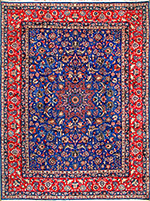Textiles Studies

Textile Research Works
Date of this Version
2021
Document Type
Article
Citation
In Encyclopaedia of Islam Three (2021). Editors: Kate Fleet, Gudrun Krämer, Denis Matringe, John Nawas, and Devin J. Stewart. 104-110.
Abstract
Hülegü Khān (r. 654–63/1256–65) established Marāgha as capital of the Īlkhānate (654–754/1256–1353) in 657/ 1259, a year after his siege and largescale destruction of Baghdad. Located 130 kilometres south of Tabriz, Iran, it became the site of an astronomical observatory directed by Nasīr al-Dīn Tusī (d. 672/1273–4), a Persian astronomer and mathematician who assembled a team of the best minds in what are today Spain, Morocco, Egypt, and Iran. The mathematical work on planetary orbits carried out there helped shape the subsequent development of sciences in Europe. Stone remains of the observatory and its equipment were identified in the 1970s by an Iranian archaeological team under the leadership of P. Vardjāvand atop a hill [Illustration 1a] west of the city. The Margha observatory influenced those built in Tabriz (698/1299), Samarkand (827/1424), and Istanbul (982/1575), as well as those in Beijing (678/1279) and Jaipur (1132/1720). The work of the so-called School of Marāgha advanced knowledge by reforming Ptolemaic theories of planetary motion, reconsidered Euclid’s Elements exploring trigonometry and spherical geometry, and developed new theorems, including the so-called Tusi couple, which contributed to Copernicus’ understanding of planetary orbits in a heliocentric system. Before the Mongol conquests of the seventh/thirteenth century, Baghdad, Mosul, Isfahan, Bukhara, Fez, Cairo, Damascus, and Aleppo figure in numerous texts as centres of research and innovation in mathematics. A strong tradition of applied geometry is evident at Margha by the mid-sixth/twelfth century in architectural monuments bearing exceptional geometric patterns as ornament in cut and glazed brick.
Included in
Art and Materials Conservation Commons, Art Practice Commons, Fiber, Textile, and Weaving Arts Commons, Indigenous Studies Commons, Museum Studies Commons


Comments
Published by Brill.